
Discover 450 years of parades at Museum De Lakenhal
The exhibition ‘Leiden celebrates – 450 years of parades’ at Museum De Lakenhal shows how parades and society have changed through the centuries. Alumnus and historian Danielle van Goethem worked on the exhibition. She gives a preview.
Parades are a Leiden tradition giving people the chance to celebrate together. From military parades and student masquerades to today’s Taptoe parade of local sports and cultural associations: see them all at De Lakenhal. Danielle van Goethem, who graduated in history from Leiden University this year, worked on the exhibition during her internship at De Lakenhal. She and curator Jori Zijlmans spent many an hour in the Leiden city archive and the university’s Special Collections archives as well as at the Rijksmuseum in Amsterdam. She documented the main findings and with Zijlmans made a selection for the exhibition. ‘We want to give visitors a peek behind the scenes and to show how Leiden parades have changed over the centuries’, says Danielle.

A tradition arises
Danielle explains how Leiden’s tradition of parades came about. ‘The idea comes from Roman triumphs. After a victory, the Roman emperor would parade his army and prisoners through the city. Leiden’s first parade was of the Geuzen [the group of Dutch nobles who liberated the city of Leiden, Ed.] escorting dignitaries to the Pieterskerk church.’ Pomp, pageantry and costumes were added to the mix at the university’s founding in 1575. And from 1835, students held their own masquerades, ‘They reenacted the Middle Ages with fabulous costumes and floats, lots of music and masses of horses’, says Danielle.
Mirror to society
Exhibition visitors will discover that Leiden’s parades hold a mirror to society. ‘The first student masquerades were clearly meant for wealthy students who paid a lot of money for their costumes and the staging.’ From 1886, with the birth of the 3 October Association, the parades were more with rather than for the city. ‘It no longer mattered who you were or where you came from. Society was becoming more democratic and inclusive.’
The exhibition brings together a range of objects and images including paintings, metre-long prints, photos, films, costumes and props such as armour, swords, helmets and spears. Danielle gives a sneak preview, ‘We even found a costume in someone’s dressing-up box! It turned out to be from 1900. The stories of the people of Leiden who joined in parades add a personal touch to the exhibition.’

Costumes from Special Collections
Many items, such as costumes, are on loan from the Leiden University Special Collections. Curator Jef Schaeps is pleased with the collaboration with De Lakenhal, ‘I am really pleased with this unique opportunity to present our collection to a wide audience. Leiden’s tradition of parades lives on, now in a modern guise. The costumes in particular are unique and definitely worth a visit to De Lakenhal.’
In the footsteps of 19th-century students
For the exhibition Danielle also researched the source of students’ inspiration. This took her to the Rijksmuseum in Amsterdam. ‘Nineteenth-century students visited the State Print room to gain inspiration from prints there. We followed in their footsteps and did the same. That was really special for me as a historian.’
Danielle now works at Museum De Lakenhal and is still involved in the exhibition. She hopes visitors will gain a new appreciation of Leiden’s long tradition of parades. ‘It’s a fantastic tradition that should continue. Hopefully, this exhibition will inspire everyone to do their bit, like I am doing now.’
-
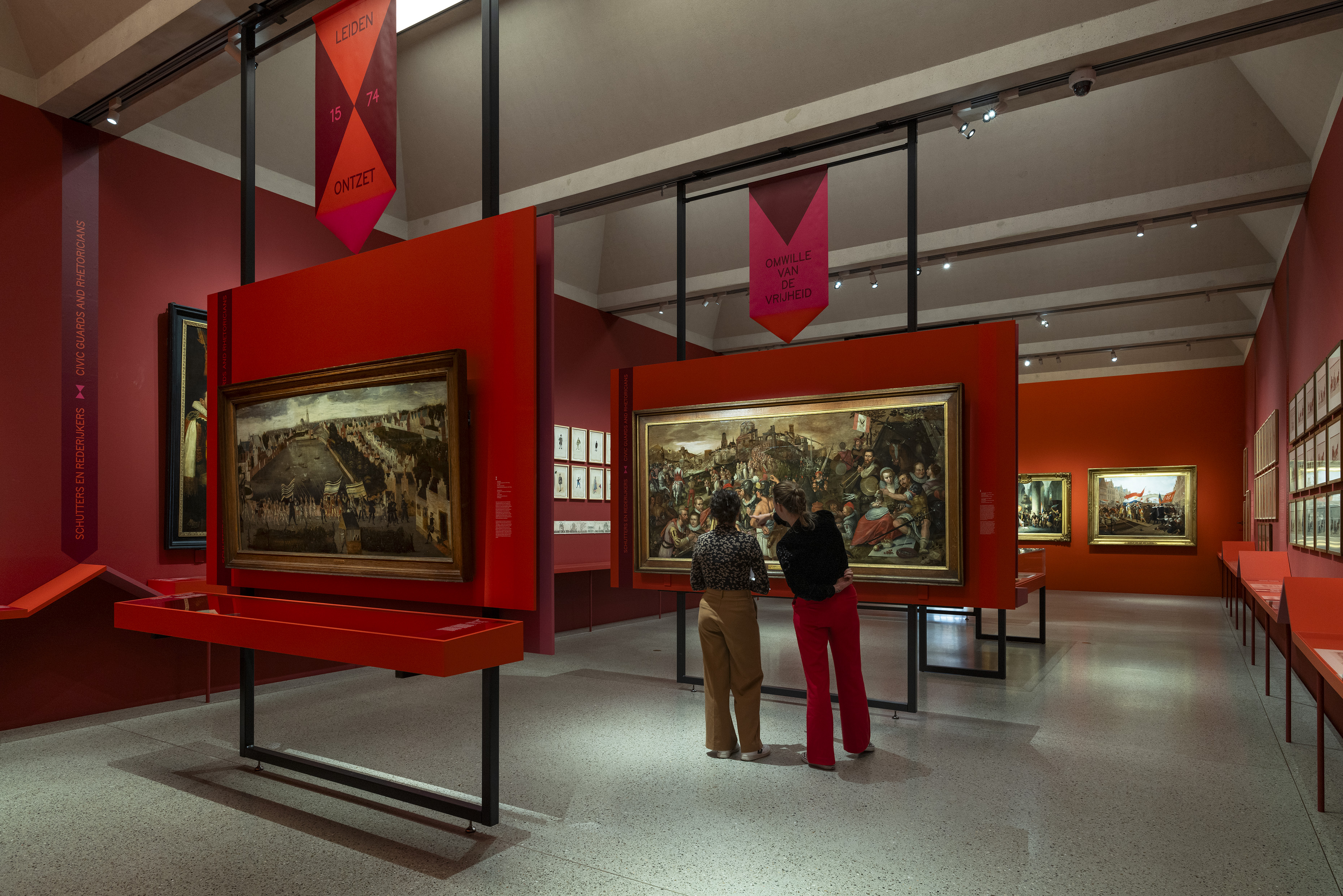
‘Leiden celebrates – 450 years of parades’ exhibition (Photo: Joep Jacobs) -
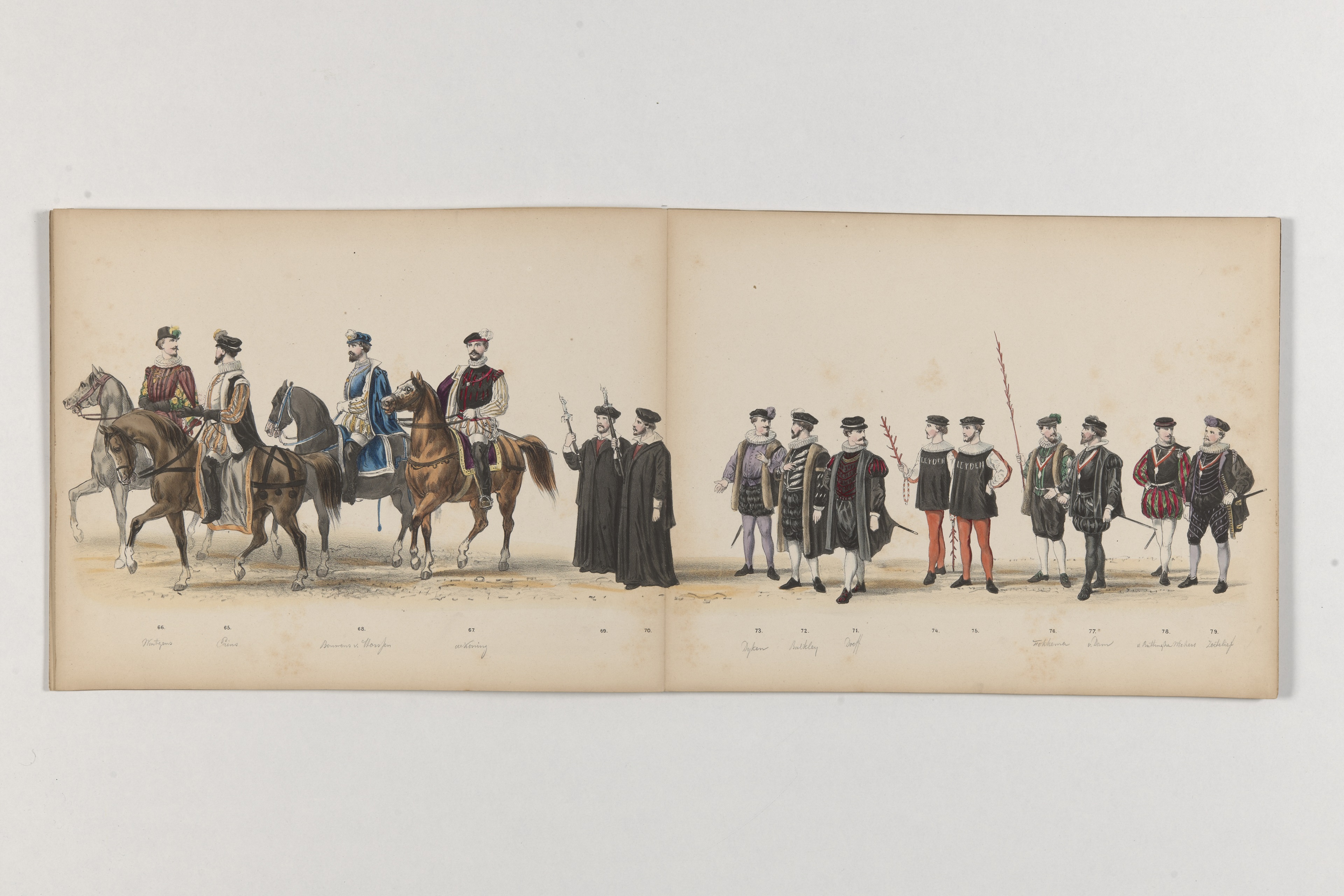
Gerardus Johannes Bos, Leiden student masquerade, 1870 (Museum De Lakenhal) -
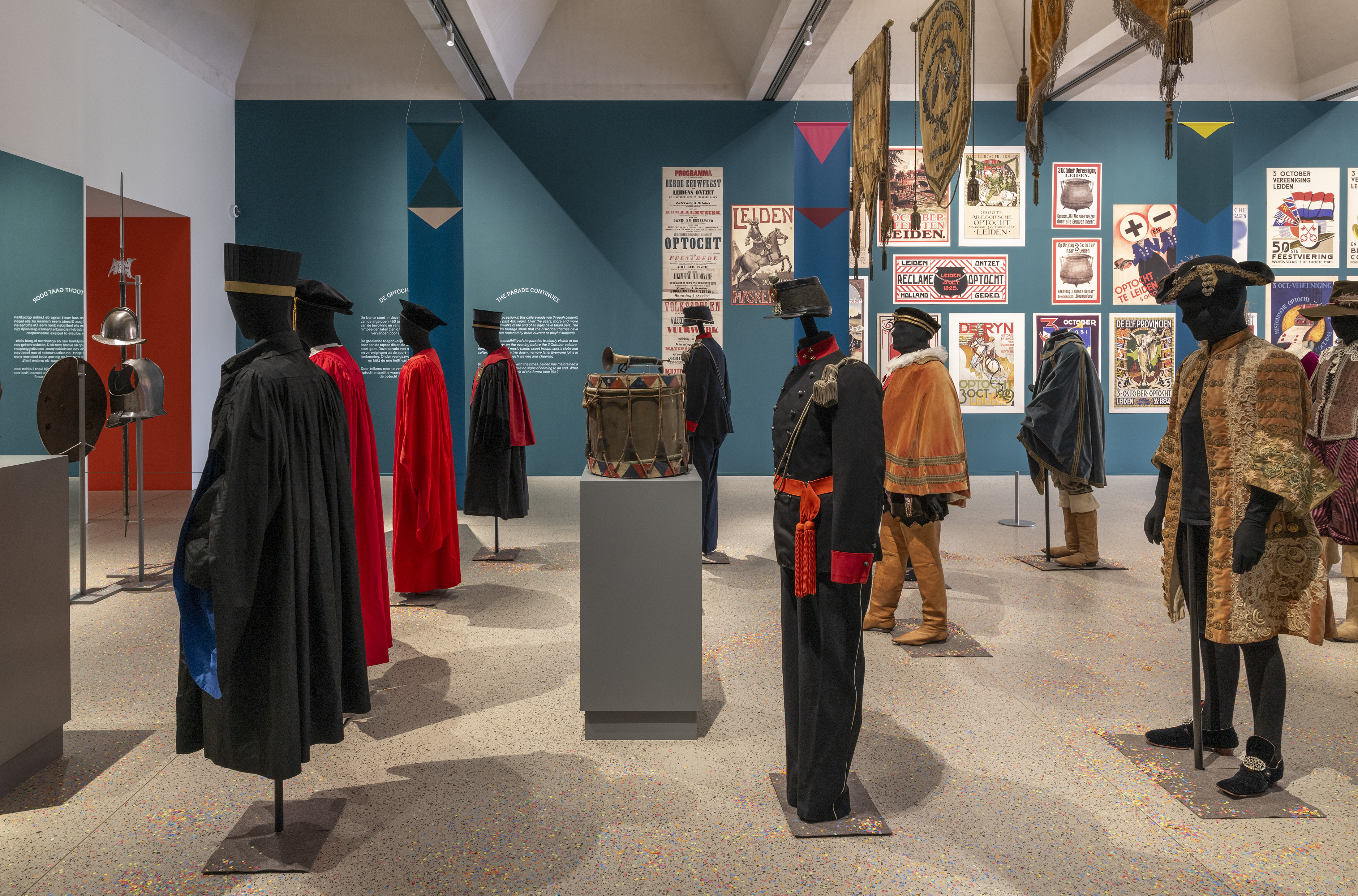
‘Leiden celebrates – 450 years of parades’ exhibition (Photo: Joep Jacobs) -
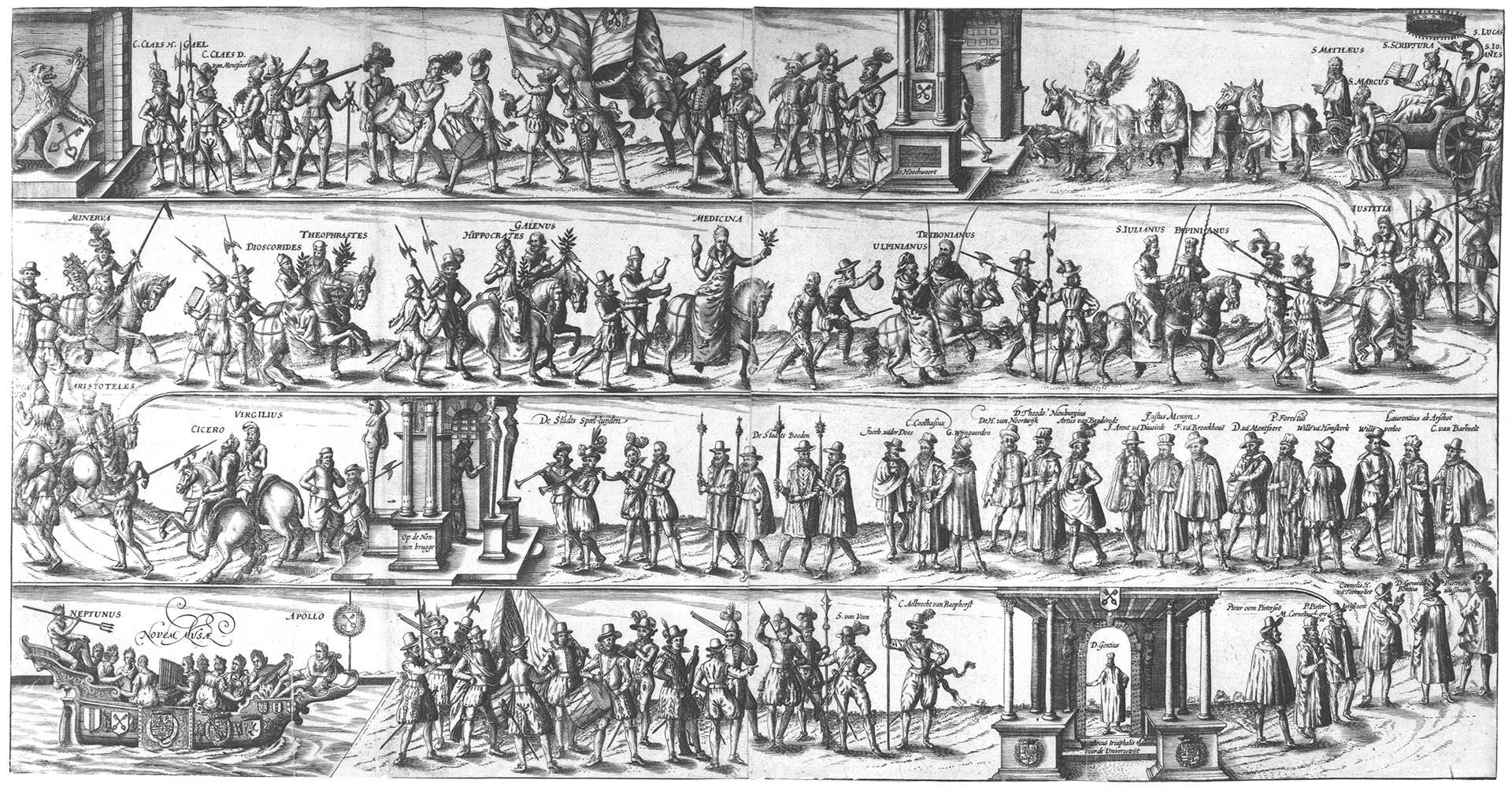
Procession at the foundation of Leiden University, 8 February 1575 (Academic Historical Museum) -
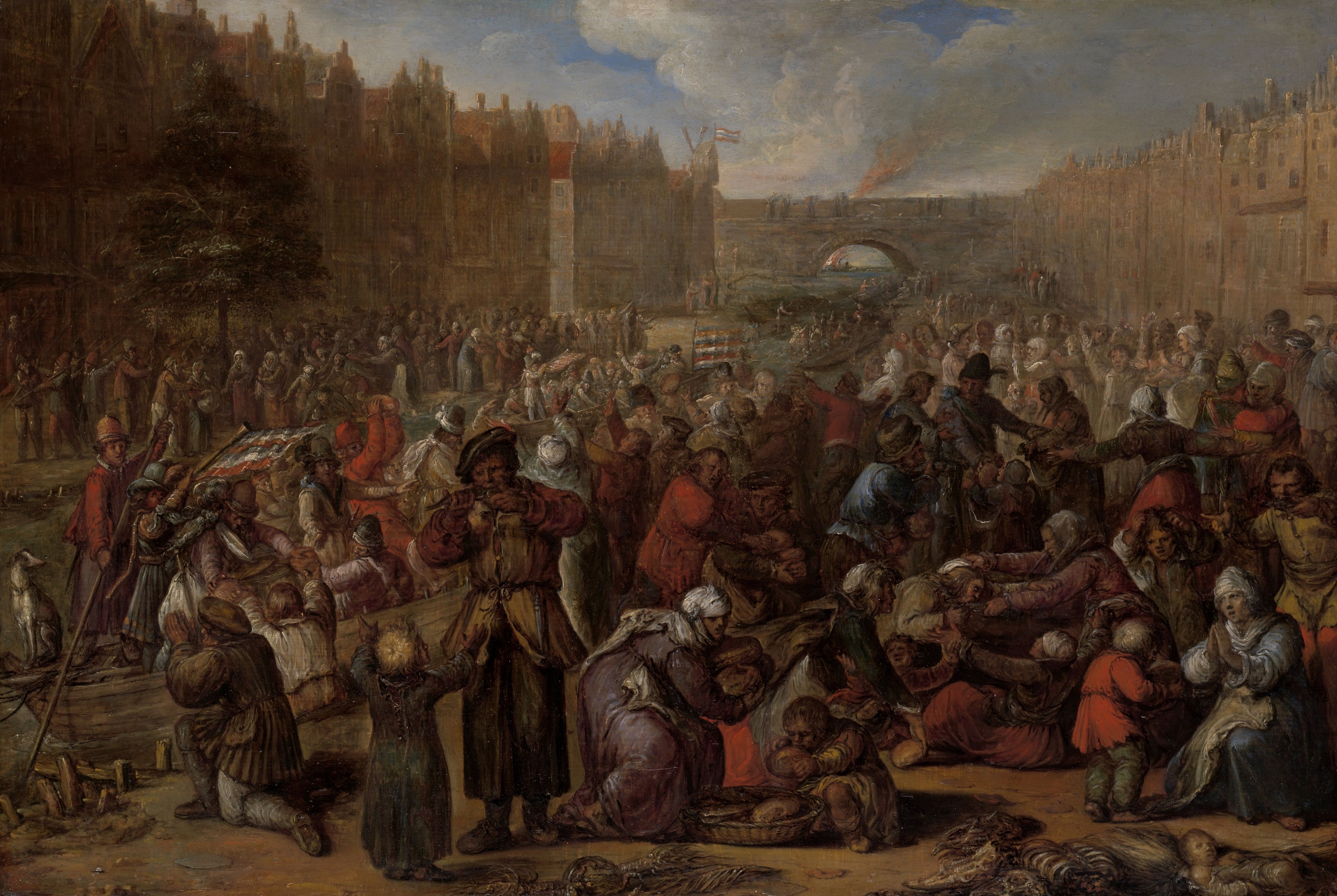
Otto van Veen, The Famished People after the Relief of the Siege of Leiden, 1574-1629 (Rijksmuseum)
Visit the exhibition
March through 450 years of Leiden’s parade history and gain a unique insight into the meaning of this tradition. The exhibition can be seen at Museum De Lakenhal from 21 September 2024 to 2 March 2025. For more information and tickets see the Museum De Lakenhal website.
Text: Jip de Bloois
